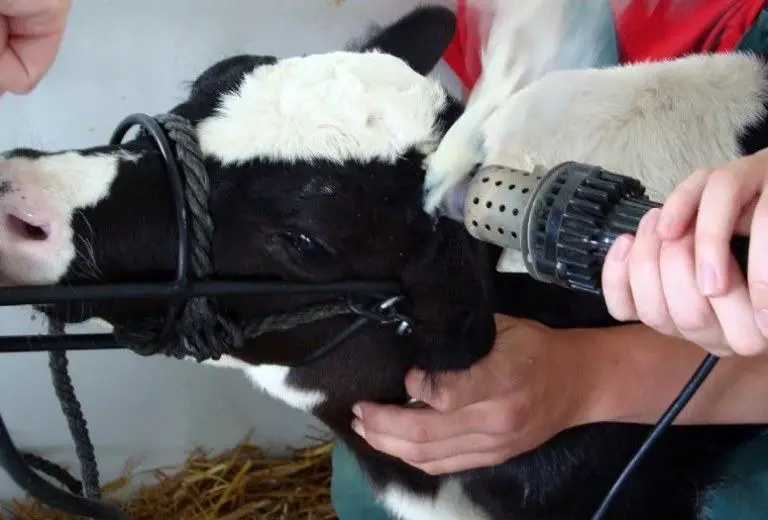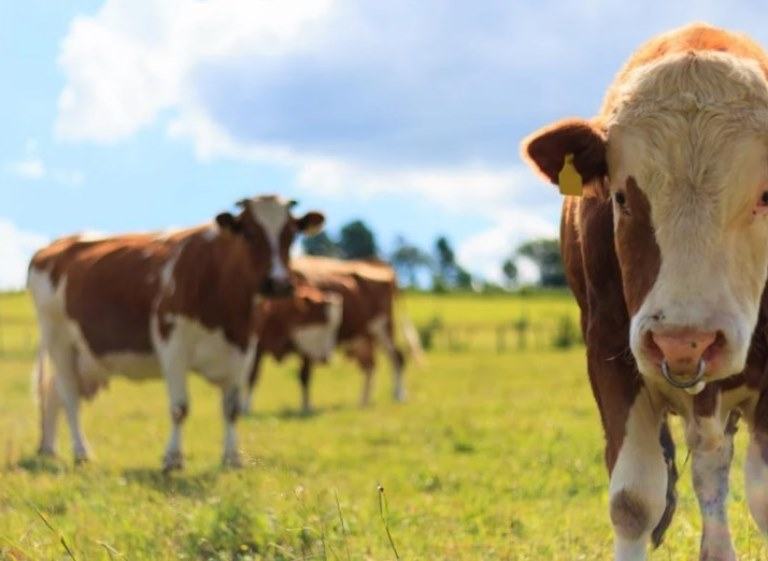No products in the cart.
Cow
Do Female Cows Have Horns?
Horns in male cattle are weapons to fight against other animals and protect the herd. What about the female? Do female cows have horns?
Since we usually see them appear with no horn, are they born hornless, or the horns already removed? We will be answering these concerns of yours in this post.
*This post may have affiliate links, which means I may receive commissions if you choose to purchase through links I provide (at no extra cost to you). As an Amazon Associate I earn from qualifying purchases. Please read my disclaimer for additional details.
Do female cows have horns?
Both female and male cows are born with horns unless they are a special type of cow that is bred to not have horns. But the horns, especially the female ones, will soon be removed for many safety reasons, one of which is to avoid injury to the other calves.
The horns can either be removed from when they are still young, around 1 or 2 months old, or after the horns have already grown. The second process is also called “dehorning”.
Since the horns have now been attached to the bone, dehorning will involve cutting through bone and the connective tissue, which will cause a lot of pain and thus is less common.
On the other hand, disbudding is performed when the female cow is still young with her horns that haven’t connected to the skull yet. The horn bud will then be burnt so that no horn can grow from it. The horns can also be trimmed if they are already visible, as long as the blood vessels aren’t affected.
Nowadays, it is recommended that farmers should support the raising of polled animals (animals with no horns) so that procedures like dehorning or disbudding are no longer performed to reduce causing pain to animals.
Check 50+ Cow Print Bedding Sets Here!
What types of female cows have horns?
All female dairy cows or beef cows have horns when they are born. In breeds that haven’t been bred to be hornless like Holsteins, Jerseys, Brown Swiss, Brahma, White Park, Danish Red, and Texas Longhorn, both sexes have horns.
The others that are brought up to be genetically hornless include Angus, Red Angus, Hereford, Shorthorn, Limousin, Charolais, and Gelbvieh.
In short, all cows can grow horns naturally when they are born, if not, they are being bred or changed genetically not to.
Read more: How Many Stomachs Does A Cow Have?
Why do female cows have horns?
In the wild, cows are prey animals. To protect themselves and their young calves from all the predators, cows use their horns to hit the carnivorous animals.
Since cows can’t run fast or have powerful back kicks like horses, which are other survival mechanisms of many prey animals, horns are their great defense attack because they can cause great injury.
This is why usually lions or wolves can only handle the weak or the young calves in the herd.
When they are domesticated, horns are deemed unnecessary as there are no longer predators. Farmers choose to either dehorn their cows or pick polled breeds from the beginning.
The reason is actually a hierarchy in each herd of cows, where the weak will be bullied by the rest. The bullies, ironically, happen just as fiercely as those fighting for survival from predators, where horns are used at their maximum power.
Therefore, this results in tragic injuries and of course not what farmers would want to handle.
Read More: Best Cattle Waterer. Not sure which cattle waterer to get for your herd? We found the top options on the market today and put them to the test so you don’t have to.
Is dehorning really necessary?
Dehorning helps reduce the chance of injuries among the cows, especially in narrow, space-limited farms, assisting the farmers to better handle the herd.
Dehorning is extremely painful, not only for cows but also for any animal going through this process, especially the adult ones. For that reason, this procedure is forbidden in the EU, Switzerland, and some other countries according to the Protection of Animal Act.

In detail, it is considered a crime to dehorn or disbud animals without anesthetic. Even used with chemical cauterization when the animal is young, this procedure is not supported.
It is recommended to disbud cows when they are under 2 months of their life. The earlier the act was done, the less pain the animal has to go through. It is also highly advisable to have a trained stockkeeper to carry on this complicated procedure.
With all the previous explanations, choosing the hornless breeds of cow seems to be the ultimate solution. Moreover, polled genes are more dominant than the horned ones, therefore it is much easier to breed more of them in the herd.
Final words
To sum up, it is much easier for farmers to keep hornless female cows other than horned. Removing the cows’ horns requires cautions and understanding, hence it is not recommended. We hope you can now answer “do female cows have horns?” with great insight and knowledge.

